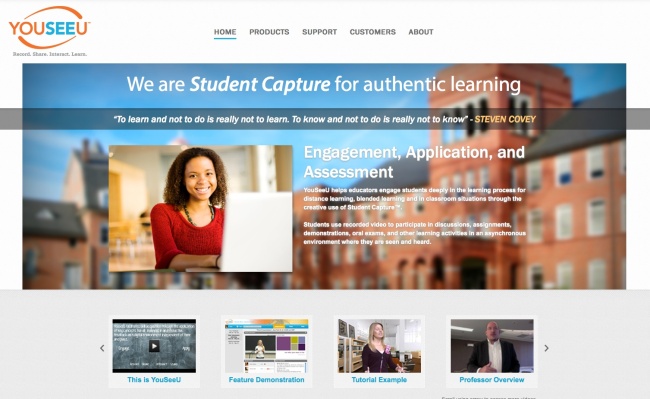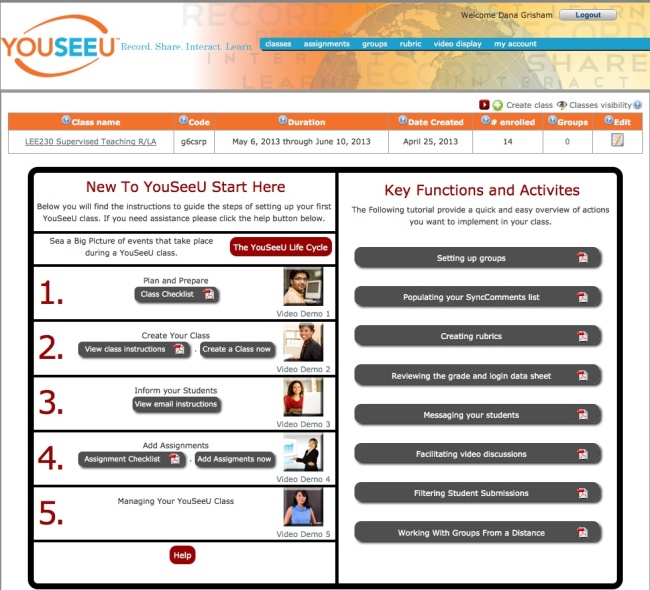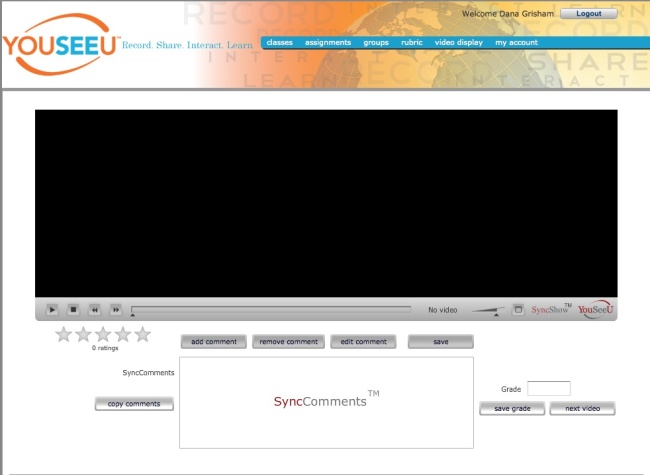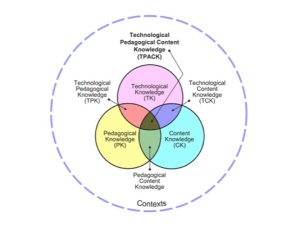Dana L. Grisham, Professor (Retired), California State University
and
Guest Blogger, Shira Lubliner, Professor, California State University, East Bay (Hayward)
We have researched and written on Cognate Strategy Instruction (CSI) over the past decade, amassing a compelling argument for the use of CSI with Spanish-speaking Emergent Bilinguals (EBs)(Lubliner & Grisham, 2017; Lubliner & Grisham, 2015; Lubliner & Grisham, 2012; Lubliner & Hiebert, 2011, Lubliner & Grisham, 2008). In this blog post, we define translanguaging and we examine the role it plays in CSI.
Background
The Latino student population in our schools continues to grow faster than any other group and test scores reflect the challenges these students face in learning academic English (U.S. Department of Education, 2015). Grouping students for English Language Development (ELD) instruction is the current approach to teach English as a second language, but poor outcomes for ELD instruction have led to the need for a different approach—our research on Cognate Strategy Instruction (CSI) (Lubliner & Grisham, 2012) is one promising approach.
Vocabulary is central to language acquisition, reading comprehension, and all forms of academic achievement (Castek, Dalton, & Grisham, 2012). Building the English vocabulary of Spanish-speaking emergent bilingual students (EBS) is a key factor in improving academic outcomes.
Spanish-speaking students may acquire a wide range of academic vocabulary words from 10,000- 15,000 cognates with shared meaning in Spanish and English (Lubliner & Hiebert, 2011). Despite the potential benefits of cognate instruction, two pervasive myths undermine teacher willingness to engage in this instruction: 1) a deficit theory that suggests that Spanish-speaking students do not know challenging vocabulary in either Spanish or English, 2) A “false friends” belief that so-called false cognates are too prevalent for the strategy to be effective. Our research has established that neither of these myths are true (Lubliner & Grisham, in process).
Lubliner and Hiebert (2011) analyzed the Academic Word List (Coxhead, 2000) and determined that more than 70% of the headwords were cognates. Cognates were sorted by frequency and a majority of cognates in Spanish are more common than corresponding words in English. For example, “edifice” is part of academic English, while “edificio” in Spanish is as commonly used as “building” is in English. The analysis suggested that Spanish-speaking EBS have a “cognate advantage” in learning academic English.
In our research, we found that cognates are helpful in identifying and using academic language. Academic language is different from ordinary spoken English because it is the abstract language of ideas and like awareness of cognates, academic language needs to be taught to students (Scarcella, 2003). Zwiers (2008) defined academic English as “the set of words, grammar, and organizational strategies used to describe complex ideas, higher-order thinking processes, and abstract concepts” (p.20). Students begin school with a fund of convesational language from their home culture, but in school they begin to use another language—that of learning in general and specialized fields. Zwiers refers to these new words as “bricks and mortar.” Bricks are the content specific vocabulary, like plate tectonics, while mortar are the general utility academic words, like analyze, define, summarize. In terms of vocabulary, we might compare this to Beck, McKeown, and Kucan’s (2002) vocabulary Tiers:
Tier 1: spoken, conversational words, like family, home, friends, etc. These are words that most English-speaking students already know and do not need to be taught.
Tier 2: words and terms useful across contexts—the “mortar” words such as analyze, summarize, define, or explain. These are words that many English-speaking students do not know and need to be taught.
Tier 3: words that are “bricks” or content specific, like photosynthesis. These are words that most students do not know and need to be taught as part of content-related instruction.
Although Tier 2 and Tier 3 words are considered more challenging for English-speaking students, this may not be the case for Spanish-speaking EBs. Spanish-speakers are more likely to know Tier 2 and Tier 3 words that are often everyday words in Spanish. For example, the academic (Tier 2) word construct is quite rare in English, with a frequency ranking of 6398. However, the cognate construir is very common in Spanish, with a frequency ranking of 525. Thus, we would argue that Spanish-speaking EBs are fully ready to employ their home language in the classroom, providing they have the support of teachers aware of that advantage and willing to apply translanguaging principles to their instruction.
CSI and Translanguaging
Cognate Strategy Instruction (CSI) teaches students the patterns of cognates and in our most recent work (Lubliner & Grisham, 2017), we contextualize CSI in “translanguaging,” a relatively new term in the research literature (Garcia & Wei, 2014; McSwan, 2017).
Translanguaging provides a framework for inclusive bilingualism. Translanguaging is reality-based; it is the way bilingual children and adults use a full repertoire of linguistic resources to communicate with one another. In contrast to subtractive bilingualism, translanguaging embraces all languages in a classroom in order to encourage meaningful communication between students and build on the social and cultural resources students bring to their classrooms—or “Funds of Knowledge” (Moll and colleagues, 1992). Translanguaging is a way to dignify the learner’s language and culture and requires flexibility and encouragement from the the classroom teacher.
Take for example, this scenario from a university-based teacher preparation program:
First student: ¿Qué haces este fin de semana? (What are you doing this weekend?)
Second student: Mi hermana y yo nos vamos a Santa Cruz para reunirse con nuestros primos. Ellos quieren ir a la playa por el día. ¿Que pasa contigo? (My sister and I are going to Santa Cruz to get together with our cousins. They want to go to the beach for the day. What about you?)
First student: No lo sé. Tal vez mi novio y yo simplemente pasar el rato en casa. (I don’t know. Maybe my boyfriend and I will just hang out at home.) Hey, did you finish the biology homework? That chapter was so long and boring.
Second student: It wasn’t so bad. I just skimmed the chapter and answered the questions. But I’m really scared about the test next week.
First student: Yeah, me too! ¡Mira! Simon está sonriendo contigo. Él es tan lindo. ¿Le gusta? (Look! Simon is smiling at you. He is so cute. Do you like him?)
Second student: No, no es así. No es más que un amigo. (No, not that way. He’s just a friend.) Hey Simon! What’s up? Did you finish the homework?
The young women in this example (Lubliner & Grisham, 2017, p. 2) shift seamlessly between English and Spanish—fully bilingual discourse as it happens in the real world. Teachers have traditionally been told that students’ languages needed to be kept separate and that “code switching” should be avoided. We now know that this is not true (Garcia & Wei, 2014; Guzzardo Tamargo, Mazak, & Parafito Couto, 2016). Bilingual and multilingual people possess a language repertoire that is comprised of all of the languages and dialects that they know—a heteroglossic language ideology (McSwan, 2017). Bilingual people move flexibly between languages depending on the subject they are discussing and the person to whom they are speaking. Experts in emergent bilingualism refute the idea that English is to be acquired as a second language. They believe instead, that students continue to acquire both languages simultaneously and continuously rather than in an ordinal sequence (Garcia & Wei, 2014).
We propose that as a strategy for learning English as a Second Language, the position taken by McSwan (2017) that EBs have a single linguistic repertoire, but that they have a rich and diverse “mental grammar” that may be termed a multilingual perspective on translanguaging. The objective and ultimate goal is for education to create fully bilingual and biliterate citizens.
For teachers, the question might be proposed: “Fine, but what does that mean? What does this look like in the classroom?” We would like to provide an example from our book (Lubliner & Grisham, 2017, pp. 56-57). The following lesson is based on a true story of Shira Lubliner’s grandparents’ immigrant experience.
Lesson 14. CLOZE Activity with Add/Change Cluster Cognates
Instructional Sequence:
- Project the following sentence on the white board and explain that it is an excerpt from a cloze (a text that has missing words that need to be filled in. “They left to escape poverty and to find __________ freedom.” Ask them to think about a word that would fit in the blank.
- Use the following think aloud as a basis for your instruction:
Teacher: Let’s see! What kind of word could fit in the sentence? I think that the missing words has to do with freedom. Freedom is a noun—a thing; so the missing word must be an adjective—a word that describes a noun. Here is a word bank that we’ll be using with this story (teacher projects the word bank on the whiteboard.
| solution ( solución) differences (diferencias) different ( diferente)
customs (costumbres) religious (religiosa) adventure (aventura) experience (experiencia) finally (finalmente) family (familia) problem (problema) fantastic (fantástica) epidemic (epidemia) |
| Figure 1. Cognates |
Students identify the adjectives (religious, fantastic, different) and then together pick the one that fits best (religious). Teacher points out that the context helped them to pick the word that fits best and eliminate the ones that don’t make sense.
- The text is next projected onto the white board and students are given the printed copy. Ask the students to work together, filling in the rest of the empty spaces with cognates from the word bank. Remind students to use cognates, parts of speech, and context to make sure that each word they select makes sense in the sentence.
The Great Flu Epidemic
My grandparents came to the United States from Europe in 1917. They left to escape poverty and to find _______________ freedom. Soon after they arrived, there was a terrible flu _______________ and my grandparents got very sick. My aunt was two years old at the time. (My father had not been born yet.) My grandmother was very frightened that her little girl would get sick and die. She did not speak English very well, so she used gestures to communicate with her neighbor. The neighbor wanted to help but she was afraid she would get sick, too. This was a terrible ______________. __________, they agreed on a ______________. My grandmother handed her little girl out the window to the neighbor, who took care of her until her parents recovered from the flu. My aunt wasn’t frightened. She thought it was a ____________________!
There were many _____________ between my grandparents and their neighbors. They had ______________ beliefs and ______________. But they shared a love of ______________. The flue epidemic was an ________________ my grandparents and their neighbors never forgot. They remained good friends until the day that they died.
- Closure: Call the class back together and go over the cloze activity (Key is in Appendix A). Students relate how they filled each blank and point out that all the words are Add/Change cognates and how that might have made the task easier. Finally, discuss the content of the story and have students relate their own experiences.
- Including students who speak languages other than Spanish. This is a good time to remind students who speak languages other than Spanish how the program will benefit them. Point out that Spanish is very close to Latin, the source of most academic vocabulary. As they participate in CSI activities students from diverse language backgrounds will learn Latin-based roots and word parts. This will help them acquire new Latin-based vocabulary, enabling them to better understand complex academic texts in English.
- Emphasize again that in your classroom, all languages and cultures are welcome. Encourage them to share words and phrases in their own languages. Explain that when students who speak languages other than Spanish incorporate their own languages into class activities they add to the linguistic richness of the class.
The Great Flu Epidemic is an American immigrant story. Nearly all students (except Native Americans) can relate to the experience of adjusting to a new country or community and have family immigration stories they would like to share. This translanguaging lesson welcomes students’ experiences, including those of students who speak only English and emergent bilingual students who speak language other than Spanish. In Lesson 16, students extend their knowledge of cognates into extended writing—working to tell their own stories or those of others they know. They may work in small groups by home language then sharing those stories with the class.
Conclusion
The CSI program is of particular value to students who speak Spanish due to the fact that Spanish is very close to Latin, which is the source of most academic vocabulary. However, CSI is also valuable to students who speak only English or languages other than Spanish. All students who participate in CSI activities learn Latin-based roots and word parts systematically. This will help them acquire new Latin-based vocabulary, enabling them to better understand complex academic texts in English. The sample lesson included in this blog demonstrates the principle of translanguaging—helping students ADD to their linguistic repertoires without subtracting from their home languages. Translanguaging welcomes the full range of students’ cultural and linguistic experiences into the classroom, building a more inclusive and potentially effective learning environment for all students.
Read more about translanguaging (click):

References
Beck, I.L., McKeown, M.G., & Kucan, L. (2002). Bringing words to life. New York: The Guilford Press.
Castek, J., Dalton, B. & Grisham, D. L. (2012). Using Multimedia to Support Generative Vocabulary Learning. In J. F. Baumann & E. J. Kame’enui (Eds.). Vocabulary Instruction: Research to Practice, 2nd Edition, (pp. 303-321). New York: Guilford.
Coxhead, 2000. Academic Word List. Retrieved: http://www.uefap.com/vocab/select/awl.htm
García, O., & Wei, L. (2014). Translanguaging: Language, bilingualism and education. New York: Palgrave MacMillan.
Guzzardo Tamargo, R.E., Mazak, C.M., & Parafita Couto, M.C. (Eds.), (2016). Spanish-English codeswitching in the Caribbean and the U.S. Amsterdam/Philadelphia: John Benjamins Publishing Company.
Lubliner, S. & Grisham, D.L. (2008). The Effects of Cognate Strategy Instruction on Spanish-Speaking Students’ Cognate Identification, Vocabulary Acquisition, and Reading Comprehension. Paper presented at the 58th National Reading Conference, December 3-6, 2008, Orlando, Fla.
Lubliner, S. & Hiebert, E. (2011). An Analysis of English–Spanish Cognates as a Source of General Academic Language. Bilingual Research Journal, 34, 1, 1-18.
Lubliner, S. & Grisham, D. L. (2012). Cognate Strategy Instruction: Providing Powerful Literacy Tools to Spanish-Speaking Students. In J. Fingon & S. Ulanov (Eds.), Learning from Culturally and Linguistically Diverse Classrooms: Promoting Success for All Students (pp. 105-123). New York: Teachers College Press.
Lubliner, S. & Grisham, D. L. (2017). Translanguaging: The Key to Comprehension for Spanish-speaking Students and Their Peers. Washington, DC: Rowman & Littlefield.
Lubliner, S. & Grisham, D.L. (in process). Debunking the myth of “false” cognates. To be submitted to Journal of Literacy Research, Fall 2017.
McSwan, J. (2017). A multilingual perspective on translanguaging. American Educational Research Journal, 54, 1, 167-201.
Scarcella, R. (2003). Academic English: A conceptual framework. The University of California Linguistic Minority Research Institute. Technical Report 2003-1.
U.S. Department of Education, National Center for Education Statistics. (2015). The Condition of Education 2015 (NCES 2015-144), English Language Learners.
Zwiers, J. (2008). Building academic language: Essential practices for content classrooms. San Francisco: J. Wiley & Sons.
Filed under: English Language Learners (ELL), Grisham, literacy events, Lubliner, vocabulary | Tagged: Lubliner | 2 Comments »































